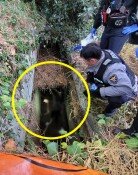[Opinion] Artifact Recovery
Chroniclers were in charge of writing history during the Joseon Dynasty. They recorded every single word the king and his subjects spoke to each other at meetings held at the court of the palace. They also wrote about things happening in and near the city in full detail as they heard of and saw them. The records written by them are called Sacho, meaning basic documents for authentic history recording. The annals of the Joseon Dynasty, regarded as the essence of writing culture, was compiled based on these documents.
There is an anecdote telling of chroniclers single-minded attitudes during the King Taejong era. King Taejong held a meeting in his bedroom to evade a chronicler, but the chronicler followed the king carrying paper and a writing brush and recorded by listening to the conversation outside the Kings bedroom. Outraged, Taejong changed the chronicler to only see a new one comes into the room.
Another kind of official the King didnt like was a talking official. Talking officials were outspoken and their job was to give candid advices to the King. Some people even say that the long Joseon Dynasty history of 519 years lasted thanks to chroniclers and outspoken officials.
A total of 47 books from the annals of Joseon Dynasty, which was taken away by Japan, will be returned to Korea. Among the chronicles kept at the four archives of Mt. Jeongjok, Taebaek, Jeoksang and Odae, the one to be returned is from Mt. Odae that was taken to Tokyo University. The return of the Joseon Dynasty chronicles, which represents a Korean cultural asset to be selected as one of the world heritage artifacts, is significant. Plundering of cultural properties is a barbarous act showing human greed and destructivity, but restoring the robbed cultural assets rarely takes place even after the world became civilized. One example is the little progress in negotiations over the books of Oegyujanggak, a Korean royal archive, which France took away from Ganghwa Island in the 1860s. In this respect, the sound judgment of Tokyo University is laudable.
The Cultural Heritage Administration (CHA) estimated that the number of Korean cultural assets possessed by foreign countries reaches 70,000, and 46 percent of them are in Japan. We should use the return of Joseon Dynasty chronicle as an opportunity to expedite the process of regaining our cultural treasures looted during the Japanese aggression era. I feel the need to renew our history view in that taking robbed cultural assets back is so difficult. It is hard to see the awareness retained by chroniclers in the past that made the annals of Joseon Dynasty, though we are now living in a society deluged with the word history. We should focus on making history in order not to be robbed of our cultural properties again.
Hong Chan-sik, Editorial Writer, chansik@donga.com



![[단독]점유율 뚝-계약 줄취소…배터리도 구조조정 시사](https://dimg.donga.com/c/138/175/90/1/wps/NEWS/IMAGE/2026/01/15/133159957.1.jpg)
![[단독]“물건 보냈는데 돈 안와”… 국제정세 불안에 수출대금 8000억 떼일 위기](https://dimg.donga.com/c/138/175/90/1/wps/NEWS/IMAGE/2026/01/15/133160131.1.jpg)

![[송평인 칼럼]군 통수권자의 최소한의 자격](https://dimg.donga.com/c/138/175/90/1/wps/NEWS/IMAGE/2026/01/14/133159775.1.jpg)
